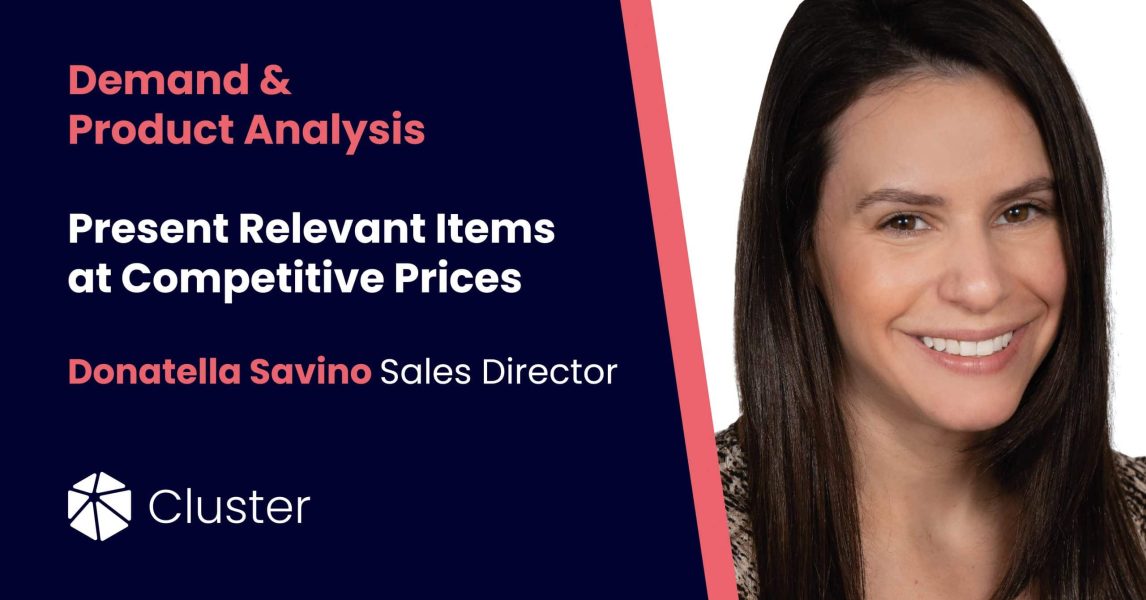There is no question catalog integrity is truly the foundation of a successful marketplace, but you know what else is? Having high demand products of prices that will sell. Many marketplaces tell us time and time again that they struggle with the ability to stay apprised of pricing changes, which we know fluctuates by the minute.
At the same time, shoppers want the reassurance that they’re getting the hottest items at the most competitive prices. To that end how does a marketplace stay ahead of new products or know what products are in highest demand outside of their own respective marketplace?
On December 8, 2021, during a live webinar, we dove into this and more, starting with the importance of catalog integrity as the foundation of any marketplace business, followed by how to present the most relevant items, at the most competitive prices. Read the transcript below and watch the accompanying video.
Getting Product Demand Analysis and Ranking Right
We can all determine why customers gravitate towards the Amazon marketplace. If I ask anyone if they ever had to go to the second page search results on Amazon, their answer would likely be no. Well, why is that? We know that Amazon has perfected product demand analysis and product ranking and always shows that best selling products at the most competitive prices. So despite this simple logic, this continues to be a pain point for many marketplaces in which low demand products are monopolizing the most important digital real estate, which is the first page search results.
According to BigCommerce, over 70% of sales are coming from page one. Having low-demand items displayed first will undoubtedly lead to a very poor user experience and leave your customers wanting more. Again, the obvious lack of competitive pricing will deter your buyers.
In fact, according to Active8 more than 50% of online shoppers will now regularly compare sellers to find the best prices. So the bottom line is pricing is not static and it’s a marketplace’s responsibility to stay apprised of competitors’ pricing, sales campaigns and promotions.
This can change by the minute. So to that end I’m just going to pose a few questions:
- How does a marketplace ensure they’re offering competitive pricing?
- What guidance, if any, are you providing to your sellers to help them price their items competitively and to win that basket?
- And if a marketplace knows that they have the best offer, how do they inform their shopper that they are in fact receiving the best offer?
- What can you do as a marketplace to increase conversions?
First, fill gaps into the competitors’ pricing. Having sufficient market research will allow you to understand competitor pricing across marketplaces to help you win the basket. Now providing pricing guidance to your sellers is an amazing opportunity for marketplaces to drive value to their seller community, as well as presenting high demand and relevant items first. Most marketplaces are relying on transaction history to dictate product rankings on their marketplace.
This works well for big organizations like Amazon. They have massive amounts of transactional data. However, this can be incredibly challenging for less mature marketplaces. Moreover, this doesn’t account for the demand of products on competitor sites. Another point to consider is that a merchant could be trying to list hundreds, if not thousands of items, and not just on your marketplace. So like I articulated earlier, they need your guidance.
Driving Value to Sellers with Market Intelligence
If you have the right data to back pricing recommendations to your seller community, it can be a tremendous way to drive value to your existing sellers and result in recruiting power sellers to your marketplace. So help your customers realize they’re getting a good deal. According to BigCommerce nine out of 10 U.S. customers price check a product on Amazon.
In closing, if you have the sales intelligence and the confidence that your marketplace has the best price, you can communicate this with your user and show it through a best offer badge. Next, be sure to dive into the importance of catalog integrity, promoting the most relevant products with the most informed, competitive pricing – and learn the characteristics of A+ sellers that are right for your marketplace.




